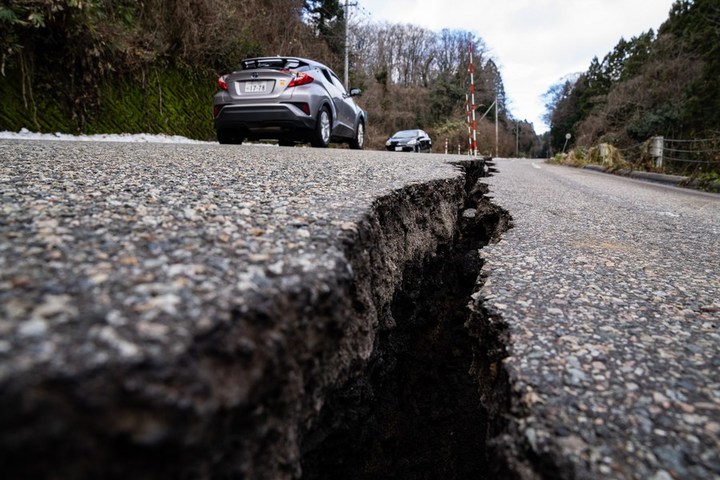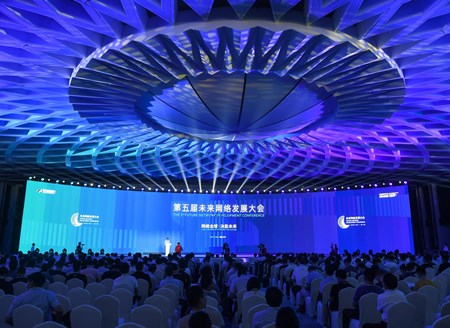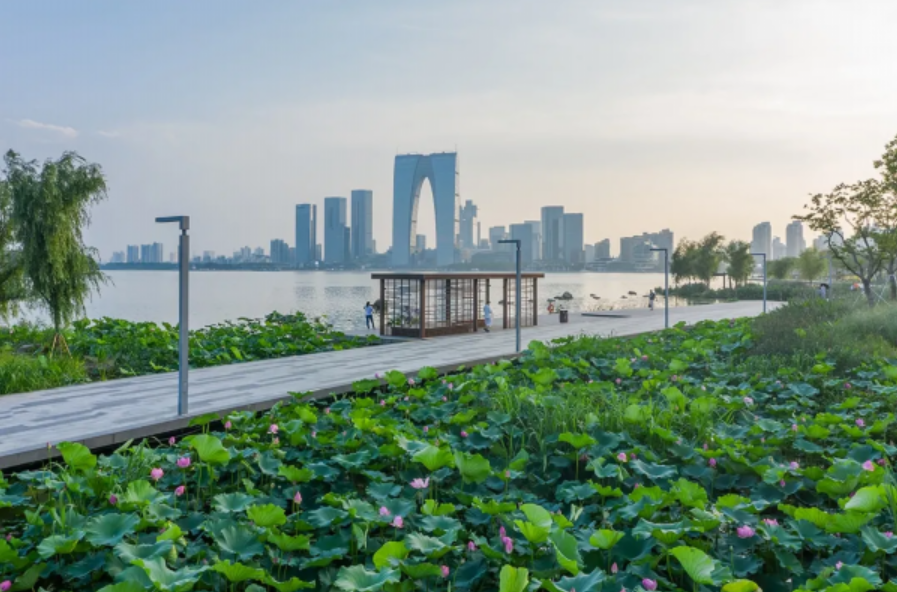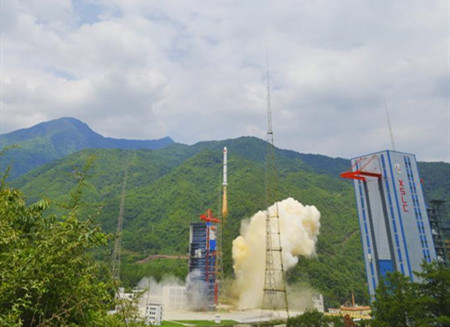* The earthquake in Ishikawa prefecture has caused extensive damage to transportation and communication infrastructure, raising concerns about nuclear safety.
* Damaged roads and supply shortages pose major challenges to rescue and evacuation efforts.
* Disruptions in power and water supply, daily services, and local livelihoods call for comprehensive support for recovery.
TOKYO, Jan. 2 (Xinhua) -- A major earthquake hit the central Japanese prefecture of Ishikawa and its vicinity on New Year's Day, causing heavy casualties and widespread structural damage. Thousands of people were evacuated following tsunami warnings issued along Japan's western coast.
In the aftermath of the quake that roiled the country's New Year celebrations, the quake-hit and affected regions have been grappling with the immediate impact on infrastructure, transportation systems, and nuclear safety.
A series of strong temblors, with a major one of preliminary 7.6 magnitude, hit the Noto Peninsula in Ishikawa prefecture at a shallow depth on Monday. The Japan Meteorological Agency has officially named it the 2024 Noto Peninsula Earthquake.
The death toll has been climbing, reaching 48 as of Tuesday afternoon due to building collapses and fires in the most devastated area.
More injuries, damage reports and information about people trapped continued to come in regarding other prefectures including Niigata, Toyama, Fukui, and Gifu, according to local authorities.
Calling the rescue of those impacted by the quakes a battle against time, Japanese Prime Minister Fumio Kishida told the press that approximately 1,000 Self-Defense Force members, 634 police officers, and 2,039 firefighters were deployed to provide assistance and conduct rescue operations.

This photo taken on Jan. 2, 2024 shows a road damaged by earthquakes in Hakui, Ishikawa prefecture, Japan. (Xinhua/Zhang Xiaoyu)
WRECKED ROADS HAMPER RESCUE EFFORTS
Disruptions of transport and communication have complicated rescue efforts in the quake-affected areas as roads and telecom facilities suffered damage following the quakes.
Following an emergency meeting on Tuesday, the prime minister told the press that a wrecked road had cut off access to the area, and rescuers were still working to reach people trapped under collapsed buildings.
On Tuesday noon, Xinhua reporters, while finding their way to Ishikawa's Wajima city near where the earthquake's epicenter was located, witnessed the road destruction firsthand.
Roads leading to the epicenter suffered severe damage, with visible cracks and large fractures, making travel treacherous. Approximately 34 kilometers from the city center of Wajima, landslides blocked roads completely, forcing reporters to retrace their path.
The earthquake's impact reverberated across the transportation sector, with at least five highways across the country closed, adding to the challenges of navigating the affected areas.
Amid temporary halts in Shinkansen bullet train operations in the Tohoku, Joetsu and Hokuriku regions, the Japan Railways (JR) Group reported disruptions, affecting thousands of passengers during the country's New Year holiday travel rush.
Meanwhile, a total of 122 trains were delayed Monday after the earthquake detection system was activated or power was temporarily cut, affecting about 100,000 people.
According to the Ministry of Land, Infrastructure, Transport and Tourism, cracks about 10 centimeters deep and over 10 meters long were found in several places on the runway at Noto Airport, leading to its closure. Some sections of expressways were also closed to traffic in various locations.
The road leading to Noto Airport in Ishikawa Prefecture was impassable, and the runway was damaged, leaving about 500 passengers and local residents in an isolated state, the ministry added.
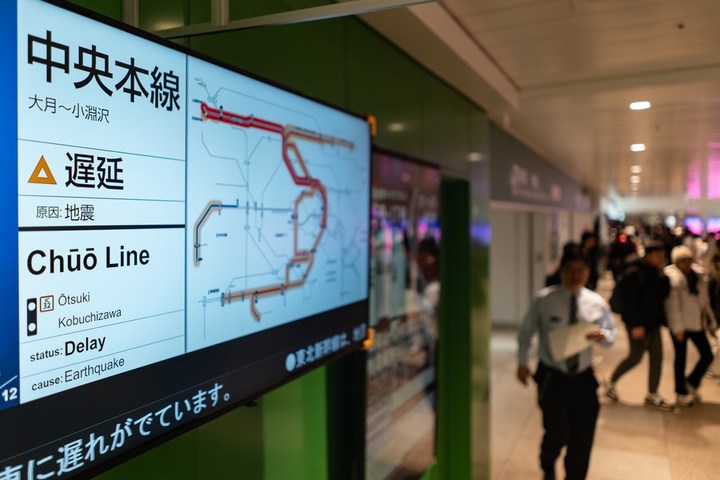
A timetable shows train delays caused by earthquakes at Shinjuku Station in Tokyo, Japan, Jan. 1, 2024. (Xinhua/Zhang Xiaoyu)
Flights were also canceled in succession. All Nippon Airways canceled 16 flights from various airports on Monday, affecting about 1,450 people. Japan Airlines canceled nine flights from both Niigata and Komatsu airports on Monday, affecting about 730 people.
The earthquake also took a toll on vital infrastructure, disrupting the fuel supply, causing gas stations' partial closures, and leading to temporary shutdowns of convenience stores.
Starting Monday, major communication providers including NTT Docomo reported interruptions in mobile and fixed-line services in Ishikawa and Niigata prefectures, affecting emergency communication capabilities.
According to public broadcaster NHK, five of six crew members aboard a Japan Coast Guard aircraft that collided with a passenger plane at Tokyo's Haneda Airport on Tuesday were confirmed dead, while the captain who managed to escape earlier is severely injured.
The coast guard plane was taxiing on the runway to transport relief goods for quake-hit areas in Niigata Prefecture. All 367 passengers and 12 crew members on board the Japan Airlines airplane that was in flames have evacuated, NHK reported.
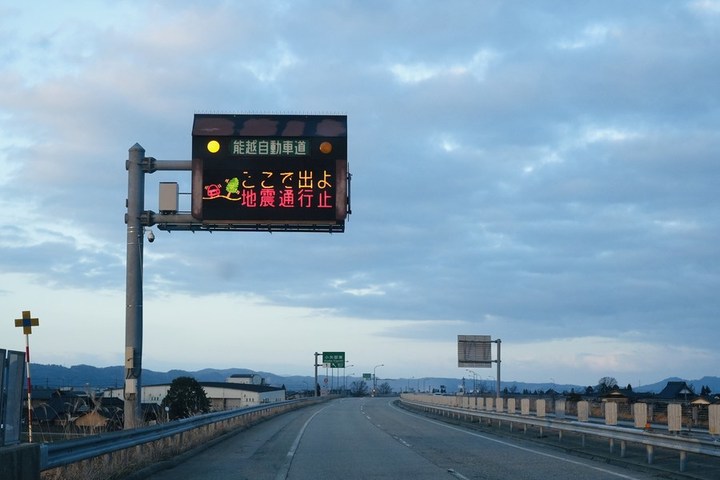
A road sign reading "No passing due to earthquakes" is seen in Oyabe City of Toyama Prefecture, Japan, Jan. 1, 2024. (Photo by Sun Jialin/Xinhua)
COLLAPSES, OUTAGES AND SUPPLY SHORTAGES
Since Monday, Japan has been hit by at least 155 quakes, and damage and outages are making life difficult in affected areas.
In Wajima, a seven-story building toppled over sideways while a central area known for its morning market was gutted by a large blaze that broke out Monday, engulfing over 200 structures in the central Wajima area, according to prefectural officials.
According to Japan's Health Ministry, the water supply has been cut off in many areas of quake-affected prefectures. Power outages hit thousands of homes after the quakes, with some 45,700 households suffering power outages in Ishikawa prefecture alone, according to the Hokuriku Electric Power Company on Tuesday.
Several medical institutions in Niigata, Toyama, and Ishikawa experienced power outages and water supply disruptions. Meanwhile, agricultural and fisheries sectors reported damage, emphasizing the need for comprehensive support.
The Monday quakes, which were felt in the capital city of Tokyo, triggered tsunami warnings along the Sea of Japan coast, with tsunamis reported as far away as the northernmost main island of Hokkaido. In areas where tsunami warnings have been issued, residents were evacuated to higher ground and other places of safety.
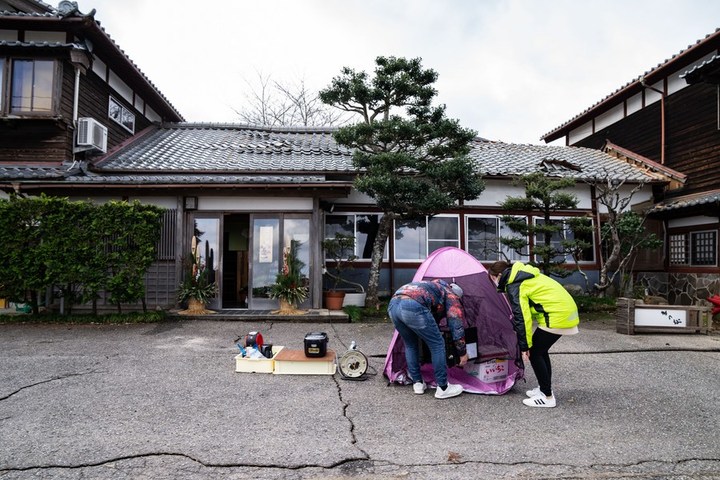
Residents of an earthquake-affected house transfer daily supplies to a tent in Hakui, Ishikawa prefecture, Japan, Jan. 2, 2024. (Xinhua/Zhang Xiaoyu)
A total of over 46,000 people have been evacuated across Ishikawa and Toyama prefectures as of Tuesday morning. Over 160 people evacuated Noto island in the city of Nanao, however, because roads have been closed on the bridge that connects the island to the mainland, supplies are unable to reach the area, the Japan Times reported on Tuesday.
Road closures have also impacted the delivery of goods in the area, with major delays seen in Niigata, Ishikawa, Toyama and Fukui, according to the Japan Post. Major convenience stores in the region, including 100 7-Eleven stores and 160 Family Mart stores, are temporarily closed as well.
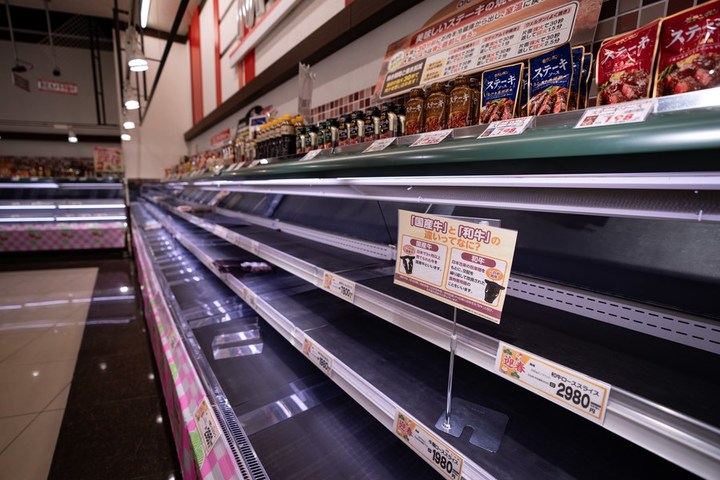
This photo taken on Jan. 2, 2024 shows an almost vacant food shelf at a supermarket in Hakui, Ishikawa, Japan. (Xinhua/Zhang Xiaoyu)
NUCLEAR SAFETY CONCERNS AMID TSUNAMI WAVES
Following Monday's 7.6-magnitude earthquake, concerns arose over Japan's nuclear safety, which has been questioned constantly since the 2011 earthquake and tsunami that triggered nuclear meltdowns at the Fukushima nuclear plant, one of the world's worst nuclear disasters.
The quake triggered a rare major tsunami warning and forecasts that waves of up to 5 meters could strike, but by 10 a.m. (0100 GMT) on Tuesday, all warnings and advisories had been lifted. The highest tsunami recorded was over 1.2 meters at Wajima Port in Ishikawa.
At the Kashiwazaki-Kariwa nuclear power plant in Niigata Prefecture, water from the fuel pools at the top floors of the No. 7 and No. 2 reactors spilled over due to strong earthquakes, Tokyo Electric Power Company Holdings (TEPCO) announced Monday.
According to TEPCO, about 10 liters spilled from the No. 2 reactor and about 4 liters from the No. 7 reactor. It is measuring the radiation levels, with no damage or leaks confirmed.
Japan's Nuclear Regulation Authority (NRA) earlier confirmed there were no abnormalities reported at nuclear power plants along the Sea of Japan after the quake, and no rises in radiation levels were detected at the monitoring posts in the region.
"It has been confirmed that there are no abnormalities at Shika nuclear power plant (in Ishikawa) and other stations as of now," government spokesman Yoshimasa Hayashi told reporters Monday afternoon.
Hokuriku Electric Power Company, the operator of the Shika plant which is the closest to the epicenter, said both of the two reactors at the plant had been offline since before the earthquake, noting that there had been some power outages and oil leaks following Monday's jolt but no radiation leakage.
Hokuriku Electric Power Company also said it has shut down two generators at its Nanao Ota thermal power plant in Nanao city in Ishikawa.
Kansai Electric Power Company confirmed no damage has been detected at the Ohi and Takahama nuclear power plants in Fukui Prefecture following Monday's earthquake.
Japan is one of the most earthquake-prone countries in the world. However, a tsunami warning had not been issued since the March 2011 earthquake in northeastern Japan.
The 9.0-magnitude undersea quake off northeastern Japan triggered a tsunami that left around 18,500 people dead or missing and sent three reactors into meltdown at the Fukushima nuclear plant.
Japan is still haunted by the memory of the country's worst post-war disaster and the world's most serious nuclear accident since Chernobyl.
